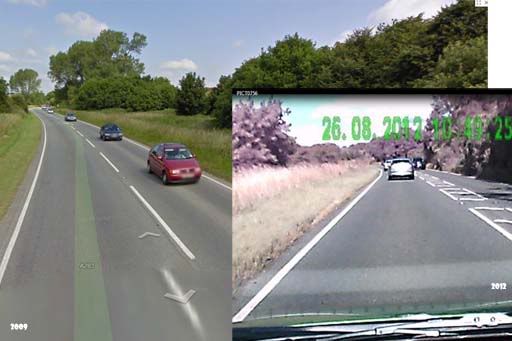Have seen similar looking threads regarding this issue but was not sure if these were the lines in question or not.

Above is a photo of the same stretch of road in 2009 and again in 2012 - as seen it used to be clear cut overtaking allowed, but since then has changed to these broken white lines filled with hash markings.
The highway code quotes:
130
Areas of white diagonal stripes or chevrons painted on the road. These are to separate traffic lanes or to protect traffic turning right.
if the area is bordered by a broken white line, you should not enter the area unless it is necessary and you can see that it is safe to do so
if the area is marked with chevrons and bordered by solid white lines you MUST NOT enter it except in an emergency
If these are the correct lines mentioned above, why do they cover the whole stretch of road when turn rights are few and far between - I am wondering as to why else they are there, is it to discourage people overtaking who are not 100% sure on the law such as me?
The amount of times I have been behind Mr 40mph - but not sure of the legality. Is my overtake "necessary" ?
What would you do when it was safe to do so and would you do it again if you had a police car behind you?
(Very much interested in anyone familiar on this route, what is your approach on this road? Steyning Road, A283)



